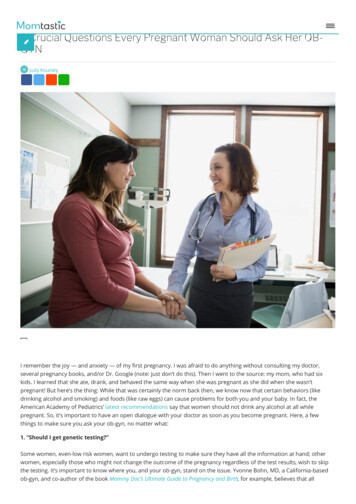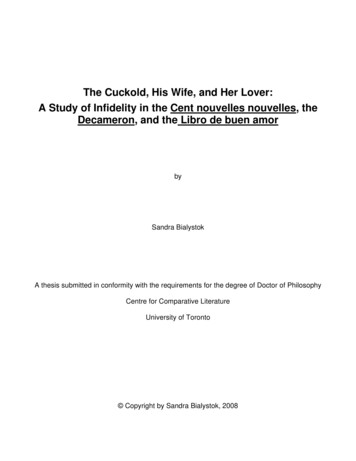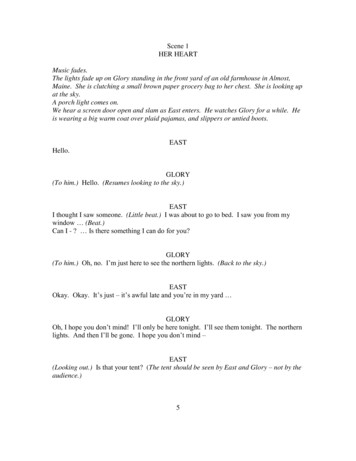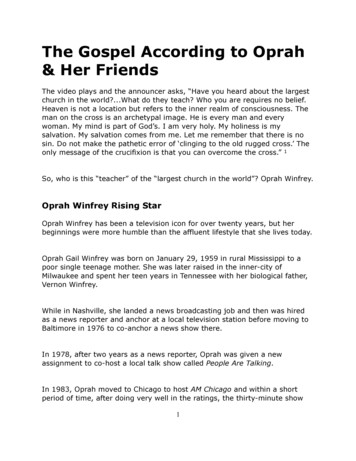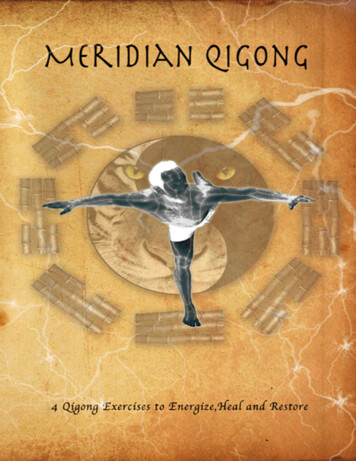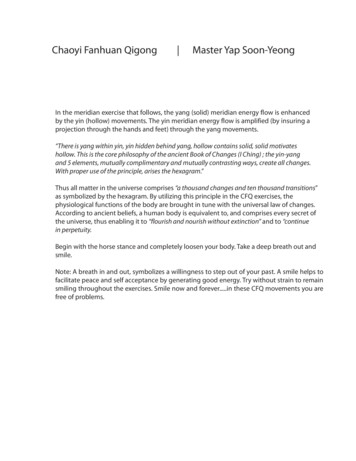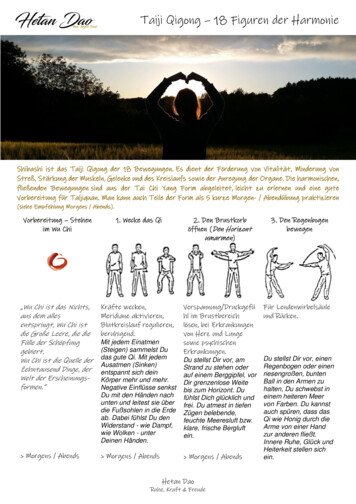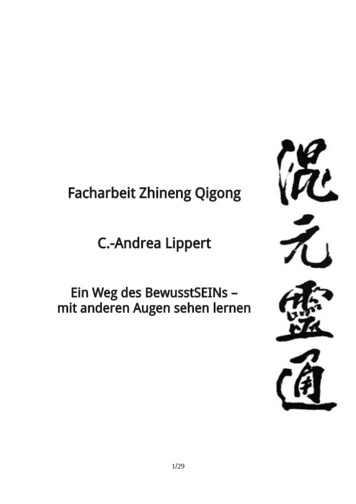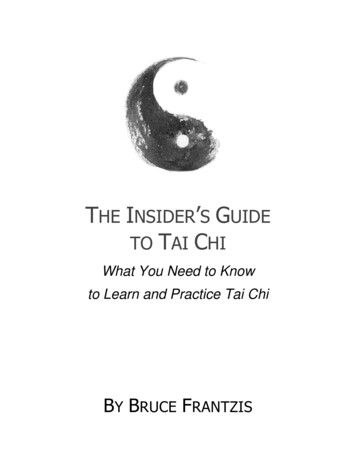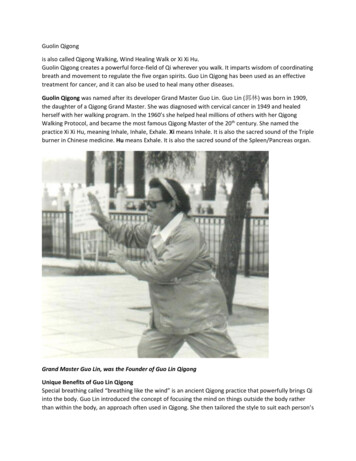
Transcription
Guolin Qigongis also called Qigong Walking, Wind Healing Walk or Xi Xi Hu.Guolin Qigong creates a powerful force-field of Qi wherever you walk. It imparts wisdom of coordinatingbreath and movement to regulate the five organ spirits. Guo Lin Qigong has been used as an effectivetreatment for cancer, and it can also be used to heal many other diseases.Guolin Qigong was named after its developer Grand Master Guo Lin. Guo Lin (郭林) was born in 1909,the daughter of a Qigong Grand Master. She was diagnosed with cervical cancer in 1949 and healedherself with her walking program. In the 1960’s she helped heal millions of others with her QigongWalking Protocol, and became the most famous Qigong Master of the 20th century. She named thepractice Xi Xi Hu, meaning Inhale, Inhale, Exhale. Xi means Inhale. It is also the sacred sound of the Tripleburner in Chinese medicine. Hu means Exhale. It is also the sacred sound of the Spleen/Pancreas organ.Grand Master Guo Lin, was the Founder of Guo Lin QigongUnique Benefits of Guo Lin QigongSpecial breathing called “breathing like the wind” is an ancient Qigong practice that powerfully brings Qiinto the body. Guo Lin introduced the concept of focusing the mind on things outside the body ratherthan within the body, an approach often used in Qigong. She then tailored the style to suit each person’s
health needs and condition. For example, men begin walking on the left, while the women begin on theright. There are specific instructions for different types of ailments. Movements from left to rightstimulate specific meridian critical in many modern chronic diseases.One of Guo Lin’s American students was a Ph. D. of Physics from Texas’ Cancer Research Institute whodocumented his findings. He noted that disease is often a lack of oxygen in the cells. Walking Qigong’sbreathing technique brings in huge quantities of oxygen, supporting healing. As the emotional state of apatient improves, healing can happen faster. Walking Qigong promotes necessary calmness, spiritualwholeness, relaxation, and other emotional benefits.Guo Lin Qigong and the MeridiansThe Yang Heel Vessel (Yang Qiao Mai) regulates the Yang channels, such as the Bladder, Gall Bladder,Small Intestine and Large Intestine. It is also connected with the Governing Vessel. Walking fills the YangHeel Vessel with Qi, which is led upward through the legs to nourish the other channels. Qigong wisdomholds that since this vessel also connects into your brain, certain leg exercises can be used to cure brainimbalances. And many cases too much Qi in the head can be cured by walking.Guo Lin Qigong emphasized hand movements that bring energy to the Dantien and GB-30. TheDantien is the main energy reservoir of the body located roughly 2 fingers below the navel. GB-30 pointon the hip is also called Huan Tiao 環跳. It is an important meeting point of the Gallbladder and BladderChannels. GB-30 is considered a warehouse storage point for anger in the body, hence moving this pointdissipates anger as a root of disease. GB-30 also happens to be one Of Ma Danyang’s Twelve Acupoints,known as the 12 most important points in the body for acupuncture. Ma Danyang was a famous Daoistborn around 1123 A.D.
Gou Lin Qigong brings Qi strongly to GB29 and GB30 points near the hip joint. GB 30 is a meetingpoint of Gall Bladder and Bladder. GB 29 is a point on the Yang Qiao Mai Meridian.In addition, acupuncture point K1 (Kidney 1 or Bubbling Spring) on the soles of the feet connects to allpoints of the body via the energy vessels. The Bubbling Spring point is said to open the sensory orificesand calm the Spirit. This point plays a significant role in walking meditation and in all of Qigong bygrounding us to Earth energy. Walking activates these meridians, dissolves stress, bringing Qi up to thebrain. This re-sets your biorhythms, boost metabolism, and promotes every aspect of your health.How to do Guo Lin Qigong Walking? There are Three Preparation Steps1. Stand in relaxed stance, hands relaxed. If you like, count silently to 64, about one minute.Remove thoughts from your mind. Look far away horizontally. The direction of your stancedepends on your disease. For specific instructions, seehttps://www.youtube.com/watch?v eRAuzeVEwns2. Take three cycles of Qi breathing evenly. This means inhaling though the nose and thenexhaling out through the mouth, followed with normal breathing. Do this 3 times. Finish withhands folded over each other at Dantien. Men: left hand on the body, right hand on top. Ladies:right hand on the body, left hand on top. For more specific instructions for various areas ofdisease, see https://www.youtube.com/watch?v eRAuzeVEwns3. Do 3 repetitions of Qigong form Spreading the Waters (Also called Dantien Opening andClosing). Start with hands near the center at dantien level. Open the hands with palms facing theearth as you exhale. Gather in (close) with hands facing each other as you exhale. Keep eyesgently closed, tip of tongue against top palate lightly. Keep shoulders down, not raised. Makeelbows and hands round. For more specific instructions for various areas of disease, seehttps://www.youtube.com/watch?v eRAuzeVEwns
Begin Walking: Walk at a medium pace, doing the wind breathing. On the first step, take two short inhales (XiXi) as if sniffing a flower. Then step with the other foot as you exhale (Hu). The inhale comes into the center of your nose as if you were smelling in a beautiful flower. Women begin step with right hands to the right, stepping right. Men begin with hands to theleft, stepping left. Step with the heel first to activate the Kidney meridian. Every 4 breaths, turn your head toward your open arms. Women: head turns to the left. Men:head turns to the right. Engage the core of the abdomen. Keep the tongue resting on the upper palate. Think of a green forest and the graceful movements of a panda bear. The panda is a symbol oftranquil strength, ease, and determination. While soft and fuzzy, it is always strong andgrounded. If saliva comes, stop walking, swallow it down to Dantien in 3 gulps. Then continue walking.
“Good walking leaves no track behind it.” Lao Tzu, Tao Te ChingFor more information and visual demonstrations, visit:https://www.youtube.com/watch?v n/guolin igong.html
Gou Lin Qigong brings Qi strongly to GB29 and GB30 points near the hip joint. GB 30 is a meeting point of Gall Bladder and Bladder. GB 29 is a point on the Yang Qiao Mai Meridian. In addition, acupuncture point K1 (Kidney 1 or Bubbling Spring) on the soles of the feet c

